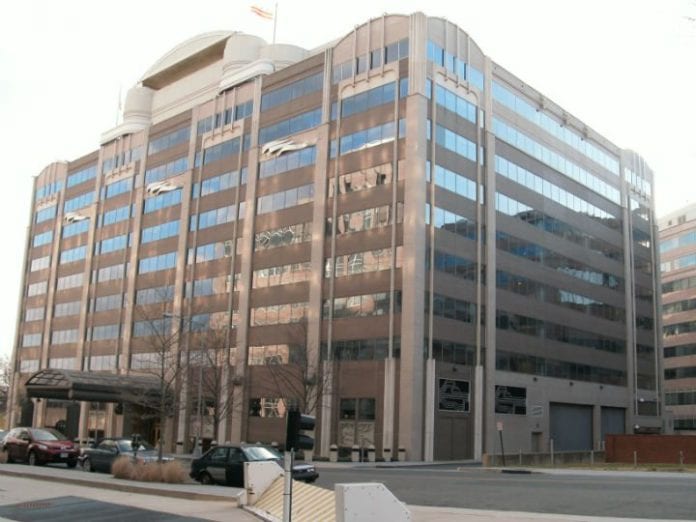The Federal Communications Commission has voted along party lines to expand the use of the 4.9 GHz band, over objections from public safety users.
The 4.9 GHz spectrum, which consists of 50 megahertz (4.940-4.990 GHz), was designated for exclusive use by public safety for fixed and mobile services back in the early 2000s. That spectrum was allowed to be shared with non-traditional public safety responders. The FCC has now dropped the requirement that the spectrum be used for public safety-related activities. The GOP majority on the commission supported the view that due to the high cost of equipment in the band and the fact that its use is mostly confined to a few metropolitan areas, the spectrum is underutilized and states ought to be allowed to use it to “best meet their unique needs,” as the FCC said in a statement. According to the agency, the expanded options for licensees — which could include commercial operators, electric utilities or FirstNet — will also expand the equipment ecosystem and bring down deployment costs.
According to FCC Chairman Ajit Pai, states “can enter into leases with public safety and non-public safety entities alike” under the new rules for 4.9 GHz.
“If an eligible state wants to lease its spectrum to FirstNet for use in its Nationwide Public Safety Broadband Network, it can do so. If it wants to lease the spectrum to a commercial entity to use for deploying a dedicated public safety broadband network, it can do that. If the state wants to lease spectrum in less densely populated areas to a wireless Internet service provider, an electric utility, or another critical infrastructure industry (or a mix of all three) and retain the spectrum in more densely populated areas, it can do that too,” Pai said.
He went on to add, “The approach we adopt today may not be perfect. But it’s better than any of the alternatives that have been proposed. And one thing we know for sure is that regulatory inertia is not the best option. The 4.9 GHz band is well-suited to meet the nation’s growing demand for mid-band spectrum, and this Commission will not stand idly by and let this spectrum continue to largely lie fallow.”
Freeing up additional spectrum for terrestrial network use, particularly 5G, has been a priority of Pai’s FCC and the commission has been especially keen to bring more midband spectrum to the table, with the CBRS PALs auction, the upcoming auction of C-Band spectrum to start in December, and action to make 3.45-3.55 GHz available for 5G as well.
A recently formed advocacy group, the Public Safety Spectrum Alliance, had advocated for 4.9 GHz to be added to the FirstNet Authority’s spectrum holdings in support of the national public safety broadband network that is being deployed and operated by AT&T. According to the alliance, there are about 3,200 existing licensees in the 4.9 GHz band and the spectrum is primarily used for point-to-point high speed backhaul.
Commissioner Jessica Rosenworcel, a Democrat, voted against the change and criticized the action as a “slapdash effort to try to foster use of this spectrum by giving states the right to divert public safety communications in exchange for revenue” and argued that it will cause state-by-state fragmentation of the use of the airwaves. She also said that the approach echoes that which was used in the slice of the 2.5 GHz band that had been designated for “education” use. The FCC changed the rules for that spectrum last year, in part because so little of the band was actually being used for educational purposes. Instead, it was mostly being leased to wireless carriers — most notably, the former Sprint had built itself a significant national portfolio of such leases.
In the case of 2.5 GHz, Rosenworcel said, “many licensees had difficulty making full use of their spectrum. So over time the FCC permitted educational licensees to lease excess capacity for commercial use. Sound familiar? Over time, more than 90% of the available spectrum was leased for commercial use. Many licensees began using this spectrum as proxy for revenue instead of a resource for education. The original public purpose behind the allocation was lost. There’s no reason to think states won’t do the same here and override public safety investments made at county and local levels in the process. And there’s no reason to think that the same policies that failed to fix the 2.5 GHz band will magically fix the 4.9 GHz band.”
A group of 10 public safety organizations, including APCO International, had told the FCC that “it would be a mistake to put state governments in a position to lease the 4.9 GHz spectrum for commercial purposes” and that the action would “effectively reallocate the 4.9 GHz band from public safety without explicitly admitting as much.”
“It’s one thing for the Commission to permit state governments to cash a check at the expense of public safety communications, but it’s an entirely different matter to permit state governments to dictate this to county and local public safety entities,” the groups said in a letter to the FCC.
The FCC will now move forward with considering a new, state-based licensing regime for the spectrum to support the new leasing structure, and the possible creation of voluntary state band managers to coordinate operations in band.

